How can you ensure your content stands out in the vast digital landscape, where everyone is vying for attention? The answer lies in content relevance.
If you want your website to rank higher and attract more visitors, understanding the importance of content relevance is the first thing you must do.
Content relevance goes beyond simply having the right keywords on your page. It involves aligning your content with what users are looking for. By mastering topical relevance and link relevance, you can create valuable and engaging content that resonates with your target audience.
Imagine crafting a compelling title, optimizing your pages with relevant information, and attracting quality link prospects – all contributing to better domain authority and improved rankings.
Content relevance is the key that unlocks these possibilities.
So, let’s delve into the world of content relevance and discover how it can elevate your online presence. Are you ready to take your website to new heights? Let’s get started!
- What is Content Relevance?
- Exploring the Significance of Content Relevance in SEO
- Google’s Stance on Irrelevant Content Campaigns: Does It Matter?
- Creating Audience-Specific Content to Match User Intent
- Strategies for Creating Relevant Content Based on Questions and Needs
- Gaining Insights into the Customer Journey for Effective Content Creation
- Producing Detailed and Tailored Content for Specific Customers
- The Value of Timely Content in Capturing Audience Attention
- Tailoring Content for Specific Customers and Marketing Channels
- Additional FAQs on Content Relevance in SEO
- Conclusion: Content Relevance in SEO
What is Content Relevance?
Content relevance, also known as relevancy, is a crucial aspect of successful content marketing. It refers to how well your content aligns with the needs and interests of your target audience.
When your content is relevant, it directly addresses user queries and provides valuable information that satisfies their search intent.
Creating relevant content involves understanding your audience’s preferences, pain points, and desires. By tailoring your content to match their specific needs, you increase the chances of engaging them and driving meaningful interactions.
One of the primary benefits of producing relevant content is its impact on search engine rankings.
Search engines strive to deliver the most accurate and helpful results to users’ queries. Therefore, when your content is highly relevant, it signals to search engines that you are providing valuable information.
To enhance content relevance in your marketing strategy, consider the following tactics:
Understand Your Target Audience
Before creating any piece of content, take the time to understand your target audience thoroughly.
Conduct research to identify their demographics, interests, challenges, and aspirations. This knowledge will enable you to create content that resonates with them on a deeper level.
Perform Keyword Research
Keyword research ensures that your content aligns with what users are searching for.
Identify relevant keywords related to your industry or niche and incorporate them strategically throughout your content. This helps search engines recognize the relevance of your material for particular search queries.
Provide Valuable Information
Relevant content should aim to provide value by offering insightful information or solving problems for readers.
Consider addressing common questions or challenges your target audience faces through blog posts, articles, videos, or guides.
Stay Up-to-Date with Industry Trends
To maintain relevance in an ever-changing landscape, staying informed about industry trends and developments is essential.
Regularly update your existing content or create new pieces that reflect current topics or emerging issues within your field.
Engage with Your Audience
Engagement is key to building a loyal audience. Encourage your readers to leave comments, share their thoughts, and ask questions.
Respond promptly and thoughtfully to foster a sense of community and show that you value their input.
Monitor Analytics
Regularly analyze the performance of your content using analytics tools. Pay attention to metrics such as page views, time on the page, bounce rate, and social shares.
These insights can help you identify which pieces of content resonate most with your audience and guide future content creation efforts.
Exploring the Significance of Content Relevance in SEO
Content Relevance Plays a Vital Role in Improving Organic Search Visibility
When users perform a search query on Google or any other search engine, they expect to find results that are closely related to their intent.
Search engines like Google measure the relevance of web pages based on various factors to ensure that users are provided with the most relevant information.
By optimizing your content for keywords and related searches, you increase its chances of appearing higher in organic search results.
Conducting keyword research using tools like Google Keyword Planner or SEMrush, or Ahrefs can help you identify popular search queries and related keywords.
Incorporating these keywords naturally into your content can increase its relevance for specific search queries.
This means that your website has a better chance of being seen when someone looks for information related to your industry or topic.
Search Engines Prioritize Relevant Content, Leading to Better Rankings
Search engines constantly strive to provide the best user experience by delivering accurate and valuable results. One way they achieve this is by prioritizing relevant content in their algorithms.
Creating high-quality content that aligns with popular search queries and includes relevant keywords increases the likelihood of ranking higher on search engine result pages (SERPs).
This can drive more organic traffic to your website, ultimately boosting its visibility and authority within your niche.
Relevant Content Enhances User Experience by Providing Valuable Information
In addition to improving rankings, creating relevant content also enhances the overall user experience.
When visitors land on your website and find information that directly addresses their needs or questions, they are more likely to stay longer and engage with your site.
To ensure content relevance and improve search engine optimization (SEO), thorough keyword research is essential. By identifying target keywords and related terms commonly used by your audience, you can tailor your content to address their specific interests effectively.
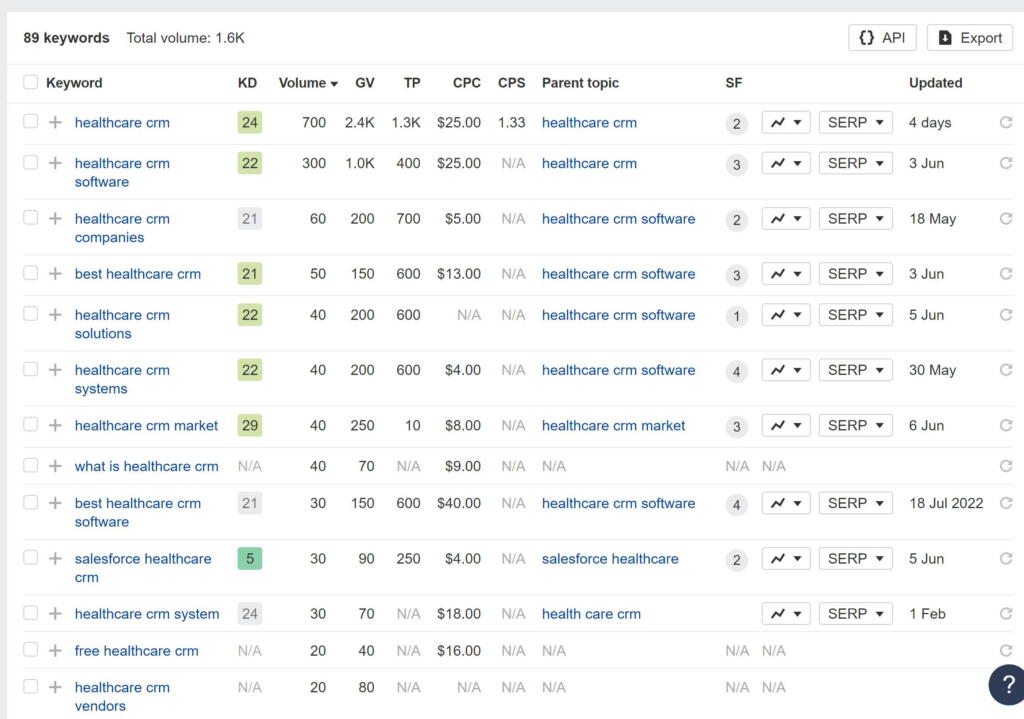
Additionally, incorporating relevant links within your content can further enhance its value and provide additional resources for your readers.
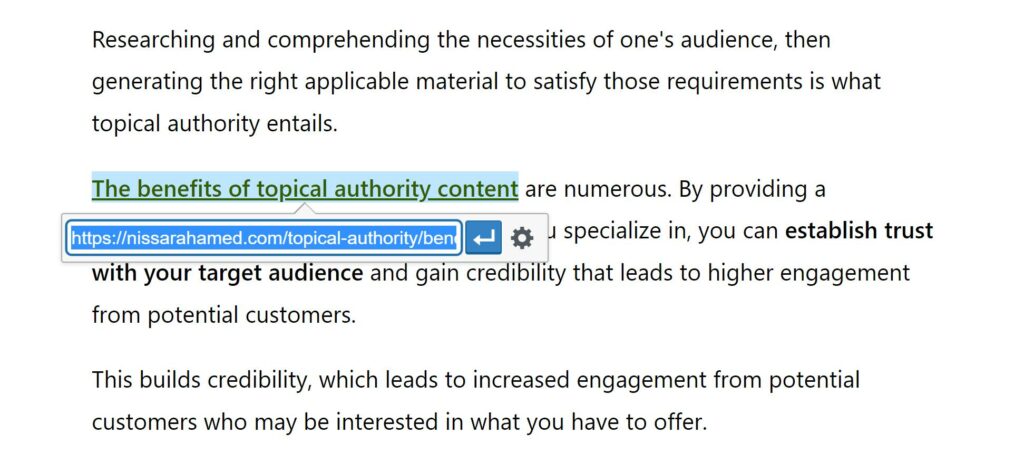
Link Building and Content Relevance Go Hand in Hand
Link building is an integral part of SEO, and content relevance also plays a significant role in this process. When other websites link to your content, search engines signal that your website is a valuable resource within your industry.
To attract high-quality backlinks, you need to create relevant and authoritative content that others find valuable enough to reference.
Incorporating relevant keywords and providing comprehensive information on your topic increases the likelihood of attracting links from other reputable sources.
Google’s Stance on Irrelevant Content Campaigns: Does It Matter?
Google Measures and Penalizes Websites with Irrelevant or Low-Quality Content
Google, the search engine giant, has made it abundantly clear that it values high-quality and relevant content. The company has implemented various algorithm updates, such as Panda, to penalize websites that create irrelevant or low-quality content. These updates aim to provide users with the most accurate and valuable information possible.
Google considers content relevance as one of its top priorities. The search engine evaluates numerous factors to determine whether a website’s content is relevant or not. It analyzes keywords, context, user engagement metrics, and other indicators to assess the quality and relevance of the content.
The Impact of Irrelevant Content on Website Reputation and Rankings
Having irrelevant content on your website can have detrimental effects on both your reputation and rankings. When users visit a website expecting specific information but encountering unrelated or unhelpful content, they are likely to leave quickly. This high bounce rate signals to Google that the website did not meet the user’s needs effectively.
Moreover, if visitors consistently find irrelevant content on a website, they may perceive it as unreliable or untrustworthy. This negative impression can damage your brand reputation and deter potential customers from returning in the future.
Regarding SEO rankings, Google prioritizes websites that offer valuable information directly related to users’ queries.
If your website consistently produces irrelevant content that fails to address these queries adequately, you risk being pushed down in search results pages. As a result, organic traffic may decline significantly over time.
The Importance of Focusing on Relevant and High-Quality Content
To achieve long-term SEO success and avoid penalties from Google’s algorithms like Panda, web admins, and businesses must prioritize producing relevant, high-quality content.
Relevance should be at the forefront of your content strategy.
Conduct thorough keyword research to identify the topics and queries that align with your target audience’s interests. By understanding what users are searching for, you can effectively tailor your content to meet their needs.
When creating content, ensure that it is comprehensive and provides valuable insights or solutions.
Address the pain points of your target audience and offer practical advice or actionable steps they can take. This approach establishes your website as an authoritative source, encourages user engagement, and increases the likelihood of social sharing.
Remember to optimize your content for search engines by incorporating relevant keywords naturally throughout the text. However, avoid keyword stuffing, as this can be seen as manipulative and harm your rankings.
Creating Audience-Specific Content to Match User Intent
Understanding user intent is crucial for creating content that resonates with your target audience.
You can enhance engagement and drive conversions by tailoring your content to meet specific needs. We will discuss the importance of personalizing your messaging based on audience segments.
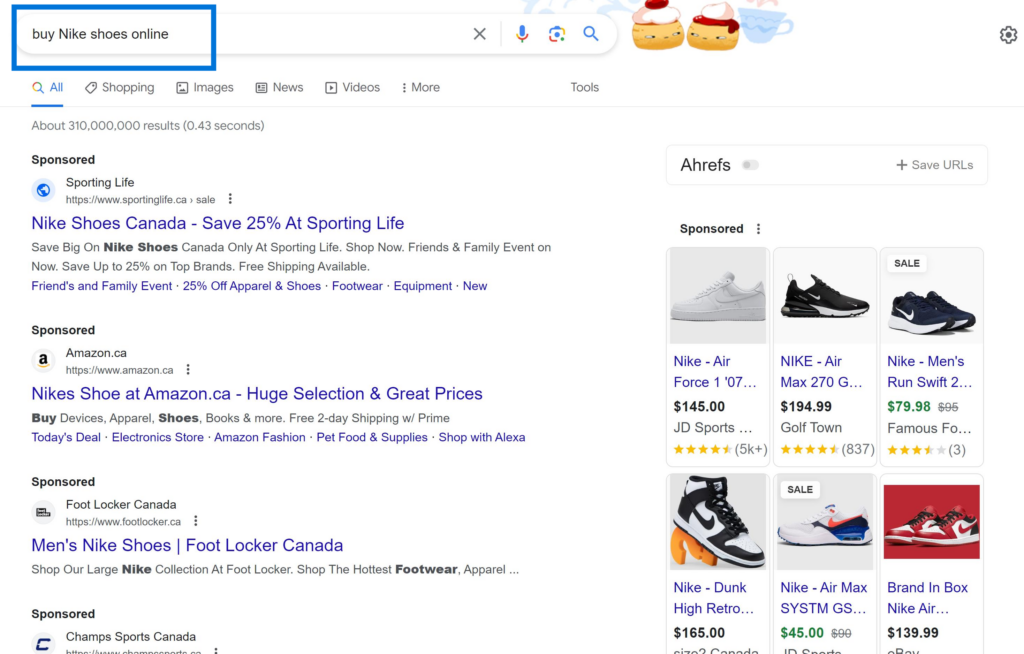
Researching your target audience is the first step in creating audience-specific content.
By gaining insights into their demographics, such as age, gender, location, and interests, you can better understand what drives their behavior and tailor your content accordingly.
For example, if your target audience consists mainly of young professionals interested in fitness and wellness, you can create content that addresses their specific challenges and goals. This will help establish a strong link between your content and their interests.
Developing detailed audience personas further helps in crafting relevant content. These personas represent fictional characters that embody different segments of your target audience.
They provide a deeper understanding of each segment’s motivations, preferences, and pain points. With well-defined personas in place, you can create content that speaks directly to each group’s unique needs.
Personalization plays a crucial role in engaging users and boosting conversion rates.
By leveraging the information gathered about your target audience through research and persona development, you can effectively customize your messaging to resonate with different segments. A one-size-fits-all approach rarely yields optimal results.
Here are some strategies for personalizing your messaging based on different audience segments:
- Use language appropriate for each segment: Tailor the tone and vocabulary used in your content according to the preferences of each group. For instance, if targeting younger demographic or casual users, using informal language or slang may help establish a relatable connection.
- Address specific pain points: Identify the most pressing challenges faced by each segment and address them directly in your content. This demonstrates an understanding of their needs and positions your brand as a valuable solution provider.
- Provide relevant examples: Incorporate real-life examples or case studies that align with the experiences of each segment. This helps users visualize how your product or service can benefit them in their specific context.
- Offer personalized recommendations: Based on user preferences or past interactions, provide tailored recommendations for further content consumption or product suggestions. This enhances the user experience and encourages continued engagement.
You can establish a deeper connection with your target audience by creating audience-specific content that matches user intent.
You gain valuable insights into their demographics, preferences, and pain points through thorough research and persona development.
Leveraging this knowledge to personalize your messaging improves engagement and conversion rates, ultimately leading to greater success in reaching your audience’s needs and goals.
Strategies for Creating Relevant Content Based on Questions and Needs
Conducting thorough keyword research is an essential first step in creating relevant content.
By identifying common questions related to your industry or niche, you can tailor your content to address these specific needs.
Here are some effective strategies to help you create content that answers the questions and solves the problems of your target audience.
Keyword Research: Uncovering Content Ideas
To begin, utilize a topic research tool or keyword planner to identify popular queries and topics related to your industry. These tools provide valuable insights into what people are searching for, allowing you to create content that directly addresses their needs.
Consider using tools like Answer the Public or Quora, which provide a wealth of information about the questions people are asking.
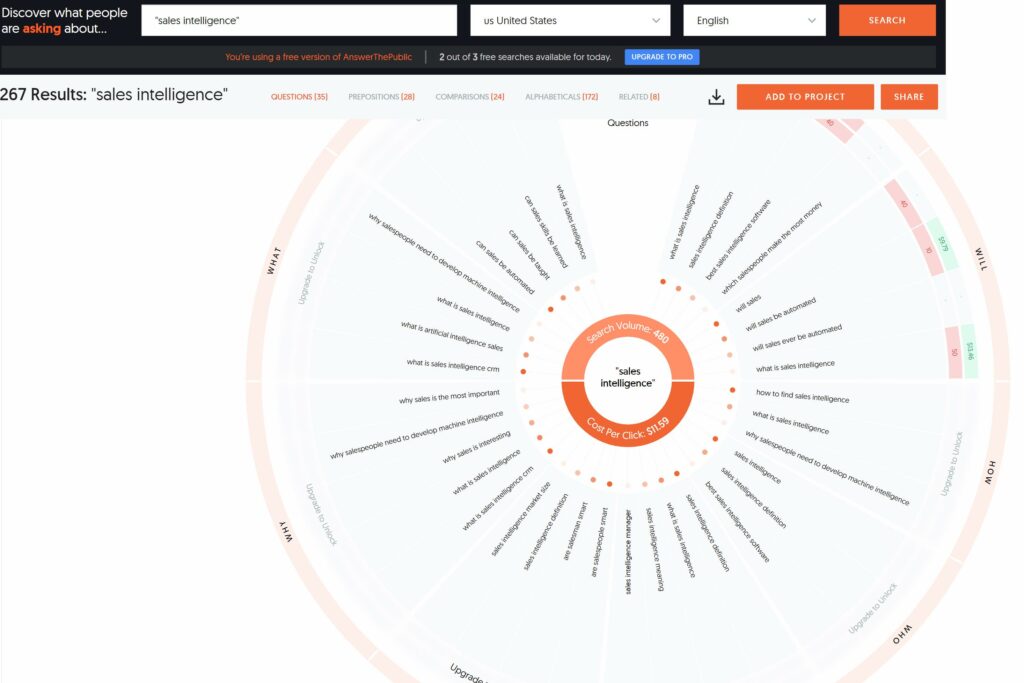
Comprehensive FAQ-Style Articles
Once you have identified your audience’s common questions, it’s time to create comprehensive FAQ-style articles that address these queries in detail. These articles should provide clear, concise answers while offering additional value through detailed explanations and practical solutions.
By organizing your content in this way, you demonstrate expertise and ensure that readers find all the information they need in one place.
When creating FAQ-style articles:
- Structure your article with clear headings for each question.
- Provide well-researched and accurate answers based on reliable sources.
- Include relevant examples, case studies, or statistics to support your points.
- Use visuals such as images or infographics to enhance understanding.
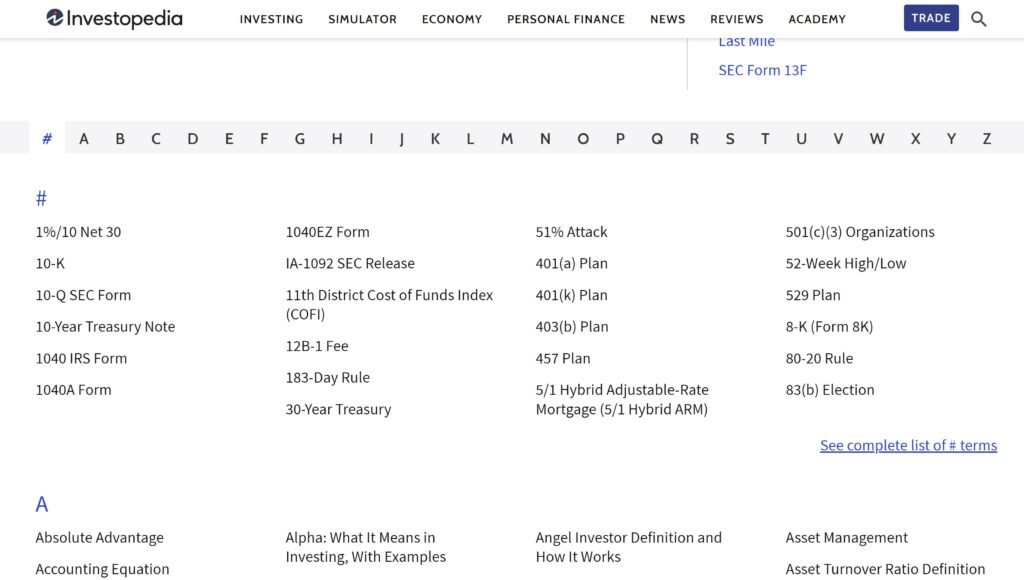
Leveraging Tools and Platforms
In addition to conducting keyword research, there are various ways you can leverage tools and platforms to generate relevant content ideas:
- Social Media Listening: Monitor social media platforms for discussions related to your industry or niche. Pay attention to the questions being asked by users and use them as inspiration for future content.
- Online Forums: Explore online forums like Reddit or Quora, where people actively seek answers to their queries. Participate in relevant discussions and create content that directly addresses these questions.
- Customer Feedback: Engage with your audience and collect feedback through surveys, emails, or comments on your website or social media channels. Analyze the feedback to identify common pain points and create content that offers solutions.
By actively listening to your audience and understanding their needs, you can develop content that resonates with them and establishes your authority in the industry.
Gaining Insights into the Customer Journey for Effective Content Creation
Taking a customer-centric approach is crucial in today’s content marketing landscape. To create content that resonates with your target audience and drives conversions, gaining insights into the customer journey is essential.
By mapping out the different stages of the buyer’s journey and analyzing customer behavior data from various touchpoints, you can ensure that your content remains relevant and valuable throughout their decision-making process.
Mapping Out the Buyer’s Journey
The buyer’s journey consists of three main stages: awareness, consideration, and decision.
At each stage, customers have distinct needs and expectations. By understanding these stages, you can effectively tailor your content to address those specific requirements.
During the awareness stage, customers are just beginning to recognize a problem or need they have. This is an opportunity for you to provide educational content that helps them understand their challenges better.
For example, a blog post titled “5 Signs You Need a New Website” could be valuable at this stage.
In the consideration stage, customers are actively researching solutions to their problems. They are comparing different options and evaluating which one best fits their needs. Your content should showcase your expertise and demonstrate why your solution is superior.
Consider creating comparison guides or case studies highlighting how your product or service stands out from competitors.
Finally, in the decision stage, customers are ready to make a purchase decision. At this point, they need reassurance that choosing your offering is the right move for them.
Provide them with testimonials from satisfied customers or offer a free trial period to alleviate any doubts they may have.

Analyzing Customer Behavior Data
To gain deeper insights into customer needs at each stage of their journey, it’s essential to analyze data from various touchpoints such as website analytics, social media engagement metrics, and email marketing statistics.
Website analytics can reveal which pages on your site attract the most traffic and engagement. Identify patterns and trends to understand what content is resonating with your audience.
For example, suppose you notice that a particular blog post about dessert recipes receives high traffic. In that case, it indicates that catering to the culinary interests of your audience could be an effective way to engage them.
Social media platforms provide valuable data on how customers interact with your brand.
Look for patterns in likes, shares, and comments to identify topics or types of content that generate the most engagement. This information can guide your content creation strategy and ensure you’re providing relevant information that sparks conversations.
Email marketing metrics such as open rates, click-through rates, and conversions offer insights into customer behavior and preferences.
Analyzing these performance metrics, you can determine which types of emails resonate best with your audience at different stages of their journey. Use this data to refine your email campaigns and deliver more targeted content.
Producing Detailed and Tailored Content for Specific Customers
Segmenting your audience based on demographics, interests, or buying behavior is crucial. By understanding who your customers are, you can tailor your messaging to address their unique needs and preferences.
Here are some key strategies for developing detailed and tailored content for specific customer segments:
- Identify Customer Segments: Start by categorizing your customer base into different segments. This could be based on factors such as age, gender, location, industry, or any other relevant criteria. By doing so, you can gain insights into the diverse characteristics of your audience.
- Understand Unique Needs: Once you have identified the customer segments, delve deeper into their specific needs and pain points. Conduct market research or gather data from surveys to understand what challenges they face and how your products or services can provide solutions.
- Craft Targeted Content: With insights about each customer segment’s unique needs, create targeted content that directly addresses those requirements. For example, if you have a segment of tech-savvy millennials interested in sustainable fashion, develop articles or videos highlighting eco-friendly clothing brands or tips for reducing environmental impact through fashion choices.
- Personalize Messaging: To truly engage specific customer groups, personalize your messaging to make it more relatable and relevant to them individually. Use language that resonates with their interests and values while aligning it with your brand voice.
- Utilize Different Formats: Consider each customer segment’s preferences when choosing your content’s format. Some prefer blog posts, while others prefer video tutorials or podcasts. By diversifying your formats, you increase the chances of capturing attention across various segments.
- Implement Feedback Mechanisms: Building a strong feedback loop is essential for continuously improving content relevance for different customer groups. Encourage customers to provide feedback through surveys, comment sections, or social media interactions. This valuable input can help you refine your content strategy and ensure it remains aligned with evolving customer needs.
- Monitor Performance: Regularly track and analyze the performance of your tailored content to evaluate its effectiveness. Metrics such as engagement rates, click-through rates, and conversion rates can provide insights into which segments are responding positively to your efforts. Use this data to optimize future content creation and distribution strategies.
Following these steps, you can produce detailed and tailored content that speaks directly to specific customer segments.
Remember that relevance is key when building customer relationships, so invest time in understanding their unique needs and preferences.
Tailoring your messaging accordingly will help establish a strong connection with your audience and drive meaningful results for your business.
The Value of Timely Content in Capturing Audience Attention
In today’s fast-paced digital landscape, content creators must stay updated with industry trends and news.
By producing timely and relevant content, you can capture your audience’s attention, generate traffic, and position yourself as an authority in your field.
Stay Updated with Industry Trends and News to Create Timely Content
To create timely content that resonates with your target audience, staying informed about the latest developments in your industry is essential.
By keeping a close eye on industry trends and news, you can identify topics that are currently hot or gaining traction. This knowledge allows you to craft compelling headlines that grab attention and entice readers to click through.
Being up-to-date enables you to provide fresh insights and perspectives on current issues.
When you offer valuable information that others may have missed or overlooked, you establish yourself as a reliable source of knowledge within your niche.
Publishing Time-Sensitive Articles or Blog Posts Helps Attract Attention and Generate Traffic
Timing plays a significant role in capturing the audience’s attention. When you publish articles or blog posts that address current events or trending topics promptly, you increase the likelihood of attracting a larger audience.
People actively search for information related to these subjects, making it more likely for them to stumble upon your content.
Moreover, search engines tend to prioritize recent and relevant content in their rankings. Creating timely pieces improves your chances of appearing higher on search results pages. As a result, this boosts organic traffic to your website or blog.
Timely Content Positions You as An Authority in Your Field and Encourages Repeat Visits
Consistently delivering time-sensitive content demonstrates that you are knowledgeable about the latest happenings within your industry. This positioning establishes trust with your audience as they perceive you as an expert who stays ahead of the curve.
Consequently, visitors are more likely to return for future updates and recommendations from someone they consider reliable.
Furthermore, when visitors find your content valuable and relevant to their interests, they are more inclined to explore other areas of your website or blog. This increased engagement can lead to longer browsing sessions and a higher conversion rate of qualified traffic.
Tailoring Content for Specific Customers and Marketing Channels
Adapt your content format to suit different marketing channels. One size does not fit all.
To effectively reach your target audience, you need to tailor your content to match the preferences of each marketing channel. By doing so, you can maximize engagement and conversion rates.
Customize messaging to match the tone and style of each channel. Each platform has its own unique voice and style that resonates with its users.
For example, a blog post may require a more formal tone, while social media platforms like Instagram or Twitter often call for a more casual and conversational approach.
Adapting your messaging accordingly can establish a stronger connection with your audience.
Optimize content for mobile devices to reach a wider audience. In today’s fast-paced world, people are increasingly accessing information on their smartphones and tablets.
To ensure that your content reaches as many potential customers as possible, optimizing it for mobile devices is crucial. This means designing responsive websites that adapt seamlessly across different screen sizes and ensuring that videos and images are optimized for quick loading times.
When tailoring content for specific customers and marketing channels, consider using different formats such as blog posts, videos, or infographics:
- Blog posts: These are great for providing in-depth information about your products or services. They allow you to showcase your expertise and provide valuable insights to your target audience.
- Videos: Videos have become an incredibly popular form of content consumption in recent years. They offer a visually engaging way to communicate effectively with your audience while delivering key messages.
- Infographics: Infographics are ideal for presenting complex data or statistics visually appealingly. They can be easily shared on social media platforms and help simplify information for better understanding.
By utilizing these various formats across different marketing channels, such as websites or social media platforms like Facebook or LinkedIn, you can cater to the preferences of your target audience and increase the chances of capturing their attention.
Additional FAQs on Content Relevance in SEO
How Does Content Relevance Impact SEO?
Content relevance is crucial for SEO as it helps search engines understand the purpose and value of your web pages.
Creating relevant content matching user intent increases the likelihood of ranking higher in search results and attracting targeted organic traffic.
What Role Does User Intent Play in Content Relevance?
User intent refers to the specific goal or information a user seeks when searching.
Creating content that aligns with user intent ensures that your website provides valuable answers or solutions to users’ queries. This improves your content’s overall relevance and quality, leading to better SEO performance.
Can Irrelevant Content Campaigns Negatively Affect My Website’s Rankings?
Yes, Google discourages irrelevant content campaigns as they can harm the overall user experience.
If your website consistently delivers irrelevant or low-quality content, it may receive penalties from search engines, resulting in lower rankings and decreased visibility.
How Can I Create Audience-Specific Content?
To create audience-specific content, start by understanding your target audience’s demographics, interests, and pain points.
Conduct thorough research to identify their needs and preferences. Tailor your messaging, tone, and delivery to effectively resonate with your specific audience segments.
Why Is Timely Content Important for Capturing Audience Attention?
Timely content allows you to address current trends, events, or industry updates that are relevant to your target audience.
By delivering up-to-date information promptly, you can capture their attention and establish yourself as a reliable source of valuable insights within your niche.
Conclusion: Content Relevance in SEO
In conclusion, content relevance plays a crucial role in the success of your SEO efforts.
Creating audience-specific and tailored content matching user intent can enhance your website’s visibility and attract targeted traffic.
Google’s emphasis on relevant content further highlights its significance in ranking higher in search results.
Understanding the customer journey is essential for effective content creation. By gaining insights into your audience’s needs and preferences, you can produce detailed and tailored content that resonates with specific customers. This approach not only increases engagement but also improves conversion rates.
Timeliness is another key factor to consider when creating relevant content.
By delivering timely information that captures the audience’s attention, you can establish yourself as a reliable source of up-to-date knowledge in your industry. This helps build trust and credibility among your target audience.
To ensure maximum impact, it is important to tailor your content for specific customers and marketing channels.
By understanding the unique characteristics of each platform and demographic, you can optimize your content to deliver the right message at the right time through the most effective channels.
Incorporating Google’s E-A-T concept (Expertise, Authoritativeness, Trustworthiness) into your content strategy is crucial for establishing credibility with both users and search engines.
Demonstrating expertise through well-researched articles, providing authoritative information backed by reliable sources, and building trust through transparent communication are all key elements of successful content relevance.
To summarize:
- Create audience-specific and tailored content that matches user intent.
- Gain insights into the customer journey for effective content creation.
- Produce detailed and tailored content for specific customers.
- Deliver timely information to capture the audience’s attention.
- Tailor your content for specific customers and marketing channels.
- Incorporate Google’s E-A-T concept (Expertise, Authoritativeness, Trustworthiness) into your strategy.
By following these strategies and focusing on producing relevant content, you can improve your website’s visibility, attract targeted traffic, and ultimately drive conversions.
